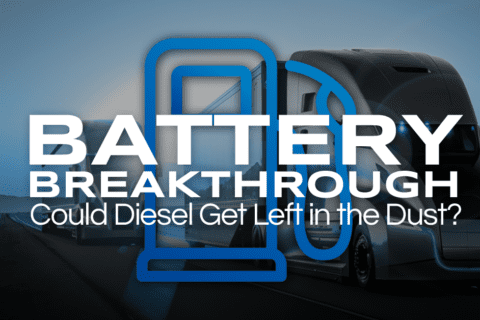Driving Dawn to Dusk: A Detailed Look at Life as a Truck Driver
Navigating the Open Road In our previous articles, we’ve explored the importance of addressing staffing shortages across different industries. Today, we shift our focus to a critical component of logistics and transportation: the truck driver. Whether you’re curious about starting a career in trucking or just fascinated by the lifestyle, understanding the typical day of a truck driver offers valuable insights and perspectives into the way our world continues moving forward. Here’s a detailed look at what a truck driver’s day entails, from dawn to dusk. Morning Routine and Pre-Trip Inspections Any experienced truck driver’s day is likely to begin early, with a routine that sets the tone for the entire journey. Most drivers start their day with a thorough pre-trip inspection, ensuring that their vehicle is road-ready. This inspection includes checking the engine oil, brake systems, lights, tires, and other critical components. This step is crucial for safety and compliance with Department of Transportation (DOT) regulations. Here’s a checklist you can reference to give you an idea of a thorough pre-trip inspection: Exterior Inspection Engine Compartment Cab Inspection Brake Tests After such an inspection, drivers usually communicate with their dispatchers to confirm their routes, delivery schedules, and any special instructions for the day. This communication is essential for ensuring smooth operations and addressing any last-minute changes. Hitting the Road: The Heart of the Job It likely comes as no surprise, but the majority of a truck driver’s day is spent on the road, navigating highways and interstates to deliver their cargo. Long-haul (over-the-road) drivers often cover vast distances, sometimes traveling across multiple states in a single trip. Regional drivers operate within a specific area, while local delivery drivers handle shorter routes, often within the same city or metropolitan area. Throughout their journey, drivers must adhere to strict Hours of Service (HOS) regulations set by the Federal Motor Carrier Safety Administration (FMCSA). These rules limit driving time to 11 hours per day, followed by a mandatory 10-hour rest period. Compliance with HOS regulations is monitored through electronic logging devices (ELDs), which track driving hours and rest breaks. Midday Breaks and Refueling Stops Driving long distances requires periodic breaks, both for refueling the truck and recharging the driver’s energy. Truck stops are a common sight along major routes, offering a haven for drivers to rest, eat, and refuel. Modern truck stops are well-equipped with amenities such as showers, laundry facilities, and restaurants. Some even feature fitness centers, movie theaters, and barber shops. During these breaks, drivers often take the time to enjoy a meal, catch up on sleep, or simply relax. Some drivers are lucky enough to spend this time in luxury as certain truck cabs are fitted with premium sleeper compartments. These sleeper cabs are designed for comfort, with amenities like beds, refrigerators, microwaves, and entertainment systems. These breaks are much more than just a nice pause, they are essential for maintaining alertness and safety on the road. Managing Responsibilities: Beyond the Wheel Truck driving involves more than just navigating from point A to point B. Drivers have various responsibilities that ensure the smooth operation of their journey. Communication with dispatchers is ongoing, as drivers update their location, delivery status, and any issues encountered on the road. Maintaining accurate logbooks and records is another critical task expected during time on the road. Drivers must document their hours, fuel consumption, and any maintenance performed on the vehicle. This paperwork ensures compliance with federal regulations and helps in tracking performance and efficiency leading to loads more productivity in the long run. Engaging with the Community and Leisure Activities Truck drivers often form a unique community, connected through shared experiences and the use of CB radios. Conversations over the radio can range from traffic updates to casual chatter, providing a sense of camaraderie and support. In their downtime, drivers engage in various leisure activities to unwind. Many listen to music, audiobooks, or podcasts to pass the time. Others might play video games, watch movies, or surf the internet using their mobile devices. These modern accessible activities help combat the monotony of long drives and keep drivers entertained. Can you imagine life on the road before streaming and social media? Evening Routine and Post-Trip Inspections As the day winds down, drivers typically perform a post-trip inspection, similar to their morning routine. This inspection similarly helps identify any issues that may have arisen during the day, ensuring that the vehicle is ready for the next leg of the journey. After the inspection, drivers settle into their sleeper compartments for a well-deserved rest. As with most fields, a good night’s sleep is crucial for maintaining alertness and safety, especially for those embarking on another long haul the following day. Why Choose a Career in Trucking? Life on the road offers a unique blend of independence, adventure, and responsibility. For many, the open road provides a sense of freedom and the opportunity to see different parts of the country. For the right individual, trucking has what it takes to be a lucrative career. With the added opportunities for growth and specialization, such as obtaining additional endorsements for transporting hazardous materials or oversized loads, there is always an interesting route to take in the trucking world. However, which one you choose, well, that’s up to you! How Optimum Staffing Solutions Can Help At Optimum Staffing Solutions, we understand the challenges and rewards of a trucking career. We specialize in connecting qualified CDL drivers with top employers in the logistics industry. Whether you’re an experienced driver looking for new opportunities or a newcomer ready to start your journey, we offer tailored staffing solutions to help you succeed. 🔗 Ready to Accelerate Your Trucking Career? If the road is calling you, Optimum Staffing Solutions is here to guide you. We provide comprehensive support to ensure you find the right fit for your skills and career goals. Connect with us today to discover how we can help you navigate the path to a rewarding career in trucking. By partnering with…





Recent Comments